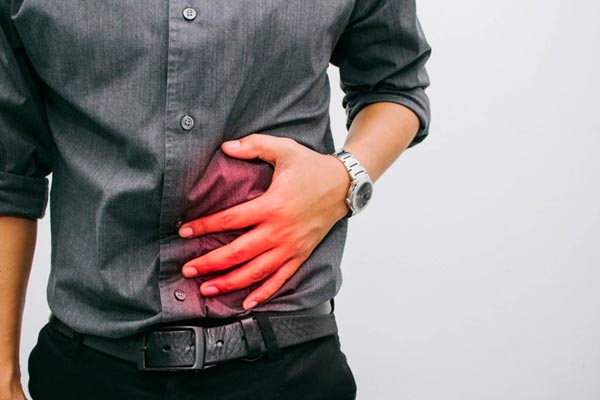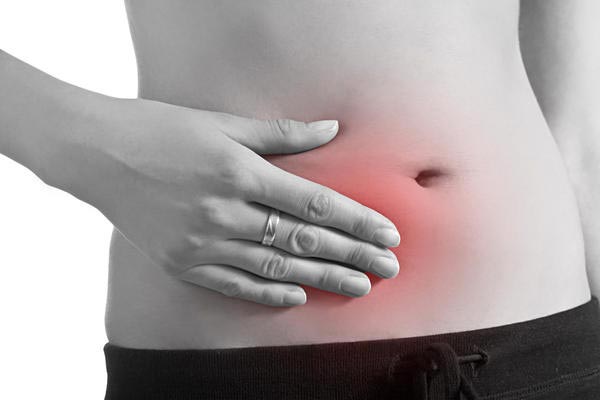Crohn’s disease is a chronic, debilitating, as yet incurable inflammatory bowel disease that can cause lesions and inflammation of the gut and bowels.
Patients with Crohn’s disease typically experience stomach pain, severe diarrhea, nutritional deficiencies, fatigue, and weight loss.
Crohn’s disease affects everyone differently, attacking different areas of the long digestive tract.
Unfortunately, the inflammation Crohn’s disease causes to develop in the body spreads from the intestinal tract to the bowel tissue and can lead to other debilitating diseases and conditions that may or may not be deadly, including cancers of the bowel and gut.
Although there is no cure for Crohn’s as of yet, new treatments are being discovered every day as we learn more and more about the complex gut system which actually hosts around 70%. Of our immune system.
Today, we know a lot more about the gut than ever before, which is reassuring. We now know, for example, that the gut is directly linked to something called our enteric nervous system and is linked with mental disorders of many kinds from anxiety to depression.
Gut problems are becoming more and more widespread throughout the world. Because of this, research into how to heal debilitating gut disorders like Crohn’s, colitis, and inflammatory bowel disease (IBD) is ongoing, and new treatments that ease the symptoms of Crohn’s are constantly being discovered.
Crohn’s disease symptoms and signs
Crohn’s symptoms can vary during flare-ups of the disease and can range from mild to severe after the onset of the disease and as the disease progresses.
Crohn’s tends to manifest in the body in flare-ups and periods of remission, so rather than gradually progressing toward an excruciating level of pain, thank goodness, patients tend to experience periods of flare-ups, then periods of remission without symptoms, depending upon how well they are eating and taking care of themselves.
Common symptoms of Crohn’s in the early stages are
- Fever (a side effect of the inflammatory process)
- Mouth sores/canker sores
- Blood in the stool
- Diminished appetite
- Anal pain and leakage
- Unexplained weight loss
- Fatigue
- Diarrhea
- Stomach pain
Severe Crohn’s may cause symptoms such as
- Joint pain and inflammation
- Liver inflammation/swelling
- Retarded growth in children with Crohn’s
Crohn’s Disease Treatment and Prevention Overview
There is no true cure for Crohn’s disease. Treatment for Crohn’s, then, seeks to manage flare-ups and their symptoms as much as possible to improve or, at least sustain, a good quality of life for the patient.
As Dr. Edward Loftus, Jr., Crohn’s expert at the of the Mayo Clinic in Rochester, Minnesota explains “Ideally, we would like to find the root cause for what’s triggering this whole response, and to date, we haven’t found it.”
Severe flare-ups can be managed through various drugs which address inflammation, fever, and the immune system response.
Most drugs try to prevent the autoimmune reaction which actually causes the inflammation before it begins, which is believed to be caused by a permeable gut lining—one which possesses lesions in the lining of the gut mucosa which leaks bacteria and toxins into the bloodstream, thereby triggering an immune/inflammatory cascade.
There is also strong evidence that Crohn’s may be a genetic disease, with some individuals possessing susceptibility genes to both Crohn’s and inflammatory bowel disorder.
Most researchers agree that whatever the true cause of Crohn’s, what is really going on in the body of the Crohn’s patient is an overactive immune system responding to some type of foreign invader in the body.
To explain, briefly, when the body detects any type of pathogenic invader, be it a virus, bacteria, fungi, toxin—whatever threatens the host, the body sends out white blood cells to annihilate this invader.
When the white blood cells (T cells), find these invaders, they begin their assault on these invaders and dedicate all their energies, and much of the patients, toward wiping them out.
The inflammation that Crohn’s causes, in fact, is part of the body’s effort to eliminate the spread of the infection.
Given this, identifying what sets off this inflammatory response for particular Crohn’s suffers, can help them to manage symptoms.
These are called Crohn’s triggers and some include
- Air pollution
- Smoking
- Eating certain foods, especially vegetable fiber or grains
- Infection or illness
- Not taking medication regularly or stopping medication
- Changes of the seasons
- Medications (especially aspirin, ibuprofen, and certain antibiotics)
- Chemicals, artificial coloring, and other food additives
Again, the disease tends to alternate between the period of symptoms and flare-ups and periods of remission.
Treatments and drugs for Crohn’s tend to increase in their level of seriousness depending on what stage of Crohn’s the patient is in.
Early Crohn’s may be able to be treated with dietary changes and anti-inflammatory drugs, while late-stage Crohn’s is sometimes treated with various types of chemotherapy via injections, IVs, or pills.
Unfortunately, anti-inflammatory drugs and treatments as severe as chemotherapy come with their own consequences upon our health and can cause nutritional deficiencies, anemia, or complications and side-effects as serious or more serious than Crohn’s itself.
To prevent Crohn’s disease (and Crohn’s disease flare-ups) altogether, it is wise to avoid a diet rich in modern grains.
This is because certain glutinous grains like whole wheat, barley, spelt, and rye can cause fermentation in the gut and pierce and/or irritate the gut lining which will only aggravate the inflammatory and autoimmune response if more bacteria or toxins leak into the bloodstream from the gut.
Researchers have also found that yeast can also exacerbate symptoms of Crohn’s disease.
It is wise to speak to a physician on the right dietary approach for you.
Since Crohn’s disease flare-ups are caused by certain “triggers” that activate the autoimmune and inflammatory response in the body, preventing flare-ups means avoiding your triggers.
Preventative lifestyle behaviors that can protect you from Crohn’s (and that are good natural approaches to managing Crohn’s are:
- Eating organic as much as possible
- Washing all fruits and vegetables which might have been exposed to pesticides
- Drinking filtered water to reduce toxic exposure
- Eating a diet rich in fibrous vegetables (some researchers believe a low-residue, low fiber is better for Crohn’s sufferers, however)
- Striving to maintain gut health by eating prebiotic foods, fermented foods, and taking high-quality probiotics, to nourish a healthy gut lining and maintain balance of gut bacteria
Crohn’s disease treatment options
There are many options for Crohn’s disease treatment today, from medications which seek to manage inflammation and, thus, relieve symptoms, to more naturopathic and whole health approaches which seek to identify the original cause of the inflammation and, thus, relieve symptoms and cure the disease as much as possible.
Crohn’s disease treatment medications
Drugs used to treat and manage Crohn’s disease are typically steroids, anti-inflammatories, antibiotics, and biologics.
Ironically, antibiotics are widely known now to wipe out huge colonies of gut bacteria and can thus cause leaky gut and nutritional deficiencies by themselves.
Some antibiotics seem to trigger bouts of Crohn’s more than calm them and to exacerbate stomach discomfort and diarrhea.
Let’s look at common medications used to treat Crohn’s.
5-ASA (Aminosalicylates) Medications
The first drugs doctors often turn to manage Crohn’s symptoms are 5-ASA medications. These types of drugs work directly to reduce inflammation in the bowel tissue.
For some individuals, 5-ASA medications prevent flare-ups and calm symptoms of Crohn’s. In general, there are 5 ASA drugs by themselves and sulfa based drugs.
5-ASA types of drugs include
- Sulfasalazine/Azulfidine (sulfa-based drugs, which some individuals have sensitivity to)
- Mesalamine (Asacol, Pentasa, Canasa, Rowasa)
- Balasalziend (Colaza)
- Olsazine (Dipentum)
5-ASA drugs are believed to be most effective for mild and early-stage Crohn’s disease patients or patients who have Crohn’s that affects the large intestine/colon and the lower small intestines.
The main side effects of 5-ASA drugs are nausea, diarrhea, headache, skin rashes, and stomach cramps.
Steroids
Steroids are one of the oldest and most traditional treatments for Crohn’s. Most steroids cut down on inflammation throughout the body, not just in the intestines or bowels, except for Budesonide, which only reduces inflammation in the bowels and which is known to produce the least side effects as well.
The medical name for steroids is corticosteroids, and these drugs can quickly cause symptoms of Crohn’s for some individuals. Bulk
Common forms of steroids are
- Methylprednisolone (Medrol)
- Budesonide (Entocort)
- Prednisone
Antibiotics
Although antibiotics are disparaged by many physicians and naturopaths today because they wipe out necessary good bacteria in the gut, many individuals find relief from Crohn’s symptoms with antibiotics because antibiotics kill off the bacteria that is leaked from the gut, thereby preventing the autoimmune response.
Commonly prescribed antibiotics for Crohn’s include ciproFlaxin (Cipro) and metronidazole (Flagyl).
Biologics
Biologics are drugs such ascertolizumab pegol (Cimzia), infliximab (Remicade), and Humira (adalimumab).
What these drugs do is to block a protein called TNF (tumor necrosis factor-alpha).
What TNF does is to prevent white immune cells from traveling to the inflamed gut area, where they attack and create more inflammation.
However, these kinds of drugs to suppress the immune system, which is why they bring relief to Crohn’s. Therefore, these drugs do carry with them increased the risk for all kinds of infections.
Many individuals with mild to severe Crohn’s are finding relief with biologics today.
Some individuals have developed lymphoma when taking biologics and it is important that a patient is closely monitored when taking them to watch for infections and developments.
Crohn’s disease diarrhea treatment
Diarrhea is a common side effect of Crohn’s disease. In fact, Crohn’s sufferers tend to vacillate back and forth from a state of constipation to having diarrhea as they constantly medicate one and then the other.
The most successful treatments for Crohn’s related diarrhea episodes are anti-diarrhea drugs like loperamide/immodium and to supplement with stool-bulking fiber agents, which help make stool a bit firmer.
Crohn’s disease constipation treatment
Many people with Crohn’s avoid high-fiber foods, like raw fruits and vegetables, because these irritate their stomachs, and this eventually leads to constipation in Crohn’s sufferers.
Another reason Crohn’s disease patients tend to suffer from constipation is that they are typically taking several medications which might cause constipation, or they might not be drinking enough water to compensate for lack of fiber in the diet.
Also, intermittent bouts of diarrhea dehydrate the system and can set the stage for constipation.
It’s wise to supplement with a fiber supplement of some kind and to drink plenty of water to lubricate the bowels. Exercise also helps to encourage bowel movements.
Enemas can help encourage bowel movements naturally and doctors recommend Crohn’s patients try all these softer methods of relieving constipation before turning to strong laxatives, like Ex-Lax.
Crohn’s disease and fatigue treatment
Crohn’s disease frequently causes fatigue or even chronic fatigue because of lack of ability to absorb nutrients in the gut and because of lesions in the intestinal tract causing blood loss.
Both of these complications of Crohn’s disease can result in anemia and can cause great fatigue.
Frequent blood tests to monitor for vitamin and mineral deficiencies is key for managing Crohn’s.
Fatigue is also a result of the immune system’s war on bacteria and toxins that is characteristic of Crohn’s.
Therefore, drugs like antibiotics and biologics may bring some relief from fatigue because they prevent the cascade of inflammatory effects caused by the overactive immune system.
Some patients have found some relief from exhaustion with Crohn’s disease by getting more vitamin D in the diet and by trying to get more natural, early morning sunlight, at least 15 minutes, three times a week or daily.
People with Crohn’s disease typically present with low vitamin D levels. Researchers have found that in patients with Crohn’s disease, those who supplement with a 2,000 IU supplement tended and who measured at blood levels of 30 ng/mL or higher, reported a higher quality of life and less fatigue than patients who received a placebo.
Crohn’s disease treatment: chemotherapy
Chemotherapy is a form of treatment using strong chemicals to fight disease, typically to destroy cancer cells in individuals with various types of cancer.
Chemotherapy is now being used for some patients with severe Crohn’s and some experience a relief of symptoms of chemo.
The reason chemotherapy relieves the symptoms of Crohn’s is because it suppresses the immune system, which calms the autoimmune response, preventing inflammation.
Chemotherapy drugs are strong and can kill healthy blood cells as well as immune cells, and anemia and infections can occur as well as other side effects and increased risk of some cancers.
Crohn’s disease treatment: Ayurveda
Ayurvedic medicine utilizes ancient Indian naturopathic method remedies and lifestyle management factors to treat diseases of all kinds.
Relying on herbs, and natural medications traditional in Indian healing, some individuals have found relief from Crohn’s disease.
Some herbs which are recommended and which are also reputed to relieve inflammation include ginger, Triphala, amla, and turmeric.
Many Ayurvedic clinics use an ancient Indian Ayurvedic treatment method called Panchakarma.
Panchakarma is an ancient system of detoxification that is purported to rejuvenate the entire body, allowing one to start with a kind of “clean slate” of health.
Panchakarma uses a five-point system of
- Vamana: emetics to produce therapeutic vomiting
- Virechana: other purgative therapies
- Basti: herbal enemies
- Nasya: nasal administration/inhaled herbal preparations
- Rakta Mokshana: drainage of toxins through bloodletting
Some individuals online have reported complete remission from Crohn’s with Ayurvedic medicine.
Crohn’s Disease Treatment Homeopathic
Natural methods of treating Crohn’s are very popular. Such alternative forms of treatment focus on easing stress to prevent gastric upset and aggravation, taking herbal supplements which help heal the gut and gut, and upon eating foods that help maintain a healthy balance of bacteria in the gut and a stronger gut mucosa.
Some of these therapies are
- Yoga (stress relief, exercise that’s easy on the gut)
- Slippery elm (healing to the gut lining)
- Chamomile tea (helps relieve gas and stomach upset typical with Crohn’s, as well as diarrhea.
- Bone broth (full of gelatin, which helps seal leaky gut to prevent a toxic leakage of bad bacteria)
- A FODMAPs diet (geared toward prevention of fermentation in the gut)
- The specific carbohydrate diet low in lactose and fructose
- Fish oil—helps heal inflammation and improve health overall
Crohn’s disease latest treatment
Hospitalization rates for Crohn’s disease are going down today—which is great news if you’ve been diagnosed with Crohn’s.
This new decline in hospitalizations is due to that class of drugs discussed earlier called biologics.
Again, biologics are designed to prevent the inflammation response that causes Crohn’s flare-ups.
Crohn’s disease Treatment and Prognosis
Although Crohn’s disease has no current cure, researchers are discovering more about how to improve gut conditions of all kinds today. New drugs with fewer side effects are consistently being tested.
However, naturopaths believe that most gut problems today are caused by environmental toxins from food, water, drink, and air, and from the gradual decline in food quality.
Everything we eat, drink, smell, breathe, and touch, is taken up by the cells and our blood and impacts the tender gut tissue in some way.
Indeed, until the internet empowered more and more individuals to really learn about how toxic their food really is.
We are taking in huge amounts of toxins and genetically modified grains, so strong they can withstand varieties and layers of harsh pesticides that can kill insects as well as our gut lining.
Then there’s the issues of chemicals, GMO grains/foods, antibiotics, hormones, and pesticides in food as well as the consequences of industrial seed oils, the nutrient decline in our food, and the quality of our bathing and drinking water.
Processed, packaged, fast food, and convenience foods contain many harsh chemicals, some of which we haven’t even researched yet, or are not reported to us.
It was only recently, for example, that the FDA finally admitted chickens were being fed arsenic-treated grains to set off an inflammatory response to swell their tissues and make packaged chicken look “plumper”—the same kind of inflammatory response we see with Crohn’s and IBD, which is food for thought, by the way.
We heavily import foods like rice and coffee—cash crops sprayed heavily with pesticides and that can develop molds during transport, such as mycotoxins on coffee.
These molds are toxic fungi that can easily set off the immune response in our bodies.
We are told to eat more fish and shellfish for their nutrients, yet most fish are toxic from the waters they swim in and could possibly do more harm to the body than good, permeating our gut lining with mercury, arsenic, cadmium, and other poisons which destroy the gut lining and cause the immune system response.
So it seems as if everything in our environment possesses the potential to set off an autoimmune response in the body that can lead to autoimmune and inflammatory diseases of all kinds.
As Dr. Loftus adds, You look back over 50 years, and these diseases were much less common. It’s interesting watching over different parts of the world where they never saw IBD, and now they are starting to see it.
As a country becomes more industrialized and more like a Western country, they start seeing more IBD. So is it something else entirely?
Is there an environmental trigger that we are missing? Is it in the food? Is it in the water supply? Is it a toxin? I don’t know, but I always worry about that in the back of my mind.
To truly try to resolve Crohn’s disease, what seems the smartest approach, then, is try to eat as clean, nutrient dense, and healthy as is humanly possible, to exercise, eschew drinking and smoking, avoid hard exercise which may cause further gaps in a leaky or inflamed gut lining, to use high quality air and water filters throughout the house (yes, even on shower taps—that stem full of chlorine and chlorine by products is deadly), and to take as good of care of yourself as you possibly can.



